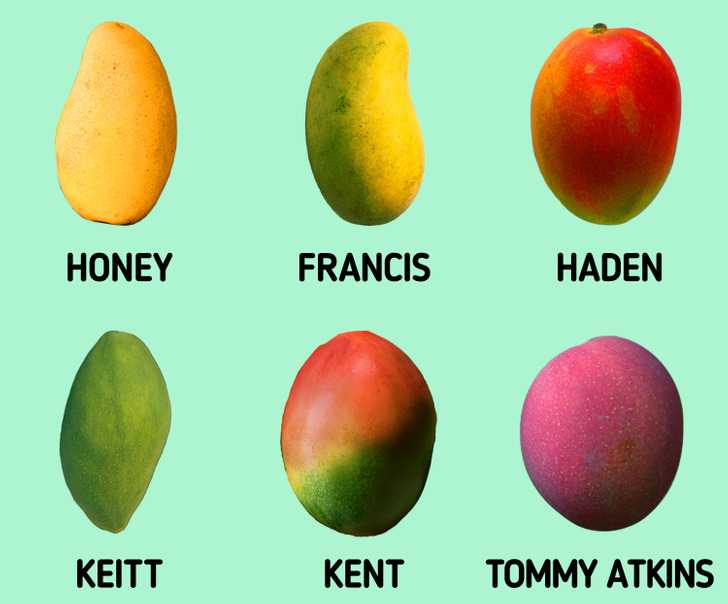How to Pick the Perfect Mango to Enjoy a Healthy Treat
The fruit of the mango tree is hardly considered “exotic” anymore, as you can find them in most grocery stores almost all year round. However, sometimes, choosing a good fruit may seem impossible. In this article, 5-Minute Crafts is sharing tips for how to spot a ripe mango fruit and speed up the ripening process of unripe mangoes.
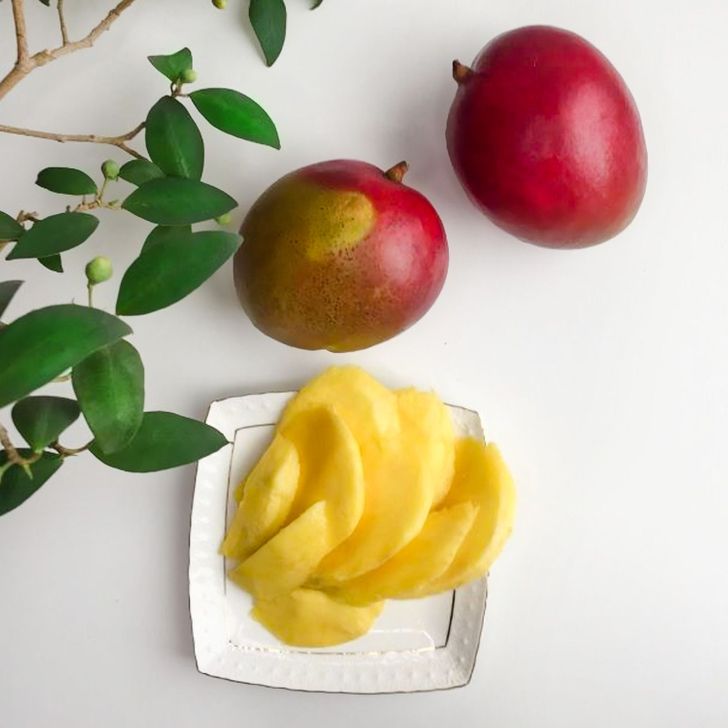
Appearance
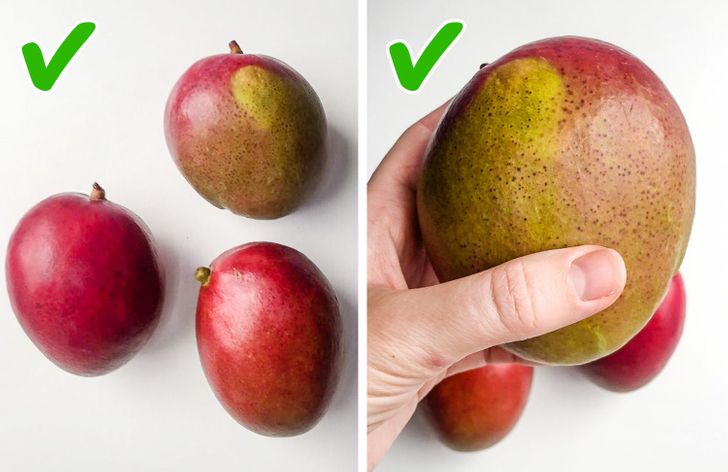
It’s hard to tell precisely what color a ripe mango fruit should be. It can be red, orange, yellow, or even completely green — it all depends on the type of fruit it is. The same thing applies to its shape. Some types of mangos have elongated or oval shapes, while other types appear more like circles.
Despite differences in color, a mango’s peel must be smooth and even. Scratches, dents, and cracks on the skin are unacceptable. Rot and bacteria can easily get into the fruit through these, which is why it’s better to opt for mangos with perfectly smooth skin.
An important note: Small black dots on mangos don’t mean that the fruit is damaged. They appear on ripe fruits that are ready to eat.
Softness
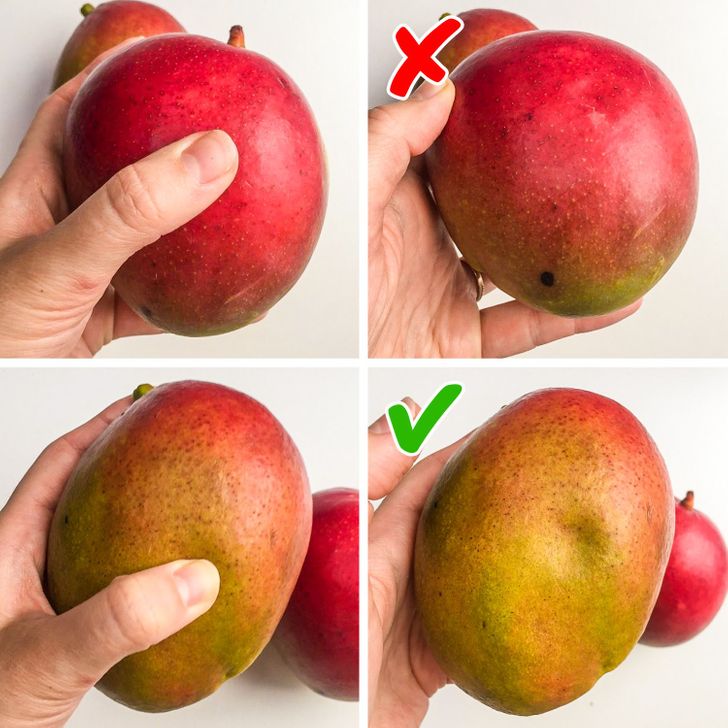
Ripe mangos are soft and firm at the same time. A shapeless fruit can turn out to be spoiled, while an overly firm one might be unripe.
In order to check the ripeness of a mango, squeeze it gently with your fingers or the ball of your hand. If it’s ripe, then a dent will appear and the skin of the fruit will appear pushed in a bit.
Smell
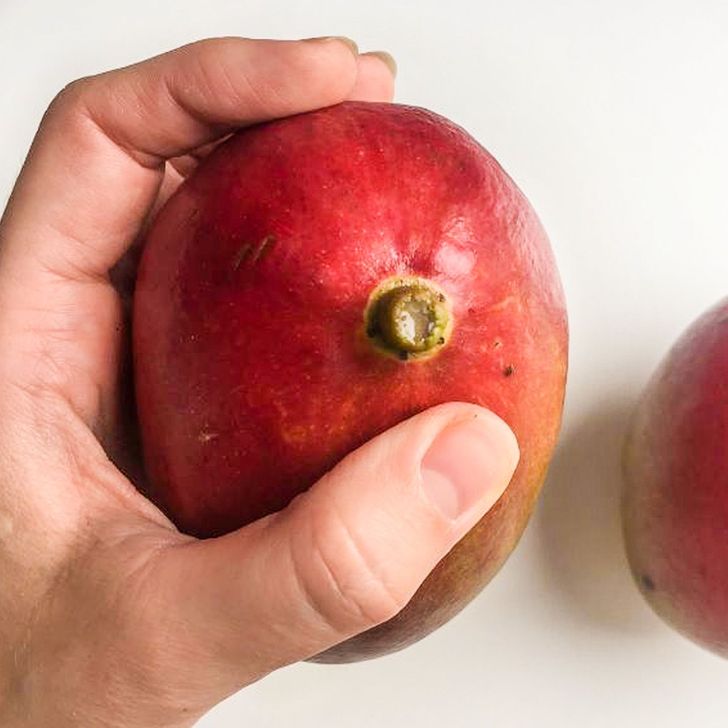
Ripe mangos always smell good. It can have a slightly fruity or even pine-ish aroma that will be sensed mainly in the area of the stalk. Some ripe fruits may even have juice on the stalk.
If the fruit doesn’t have any smell, it’s likely that it hasn’t ripened yet. If a mango has a sour smell, it means the fruit has started to go bad, and you shouldn’t buy it.
What type of mango you’d better stay away from
- If the fruit has a wrinkled surface, it’s likely that it was picked from the tree too early and didn’t have time to ripen.
- If the fruit extracts lots of juice when you press it, the mango is likely overripe and has started to go bad.
- If the mango has a lackluster peel and dull coloring, it’s likely that this fruit has started to turn.
- If the fruit is wet to the touch, don’t buy it. There’s a good chance that there was a spoiled fruit lying next to it, and mold could’ve already penetrated the mango that you picked up.
How to help mangos to ripen
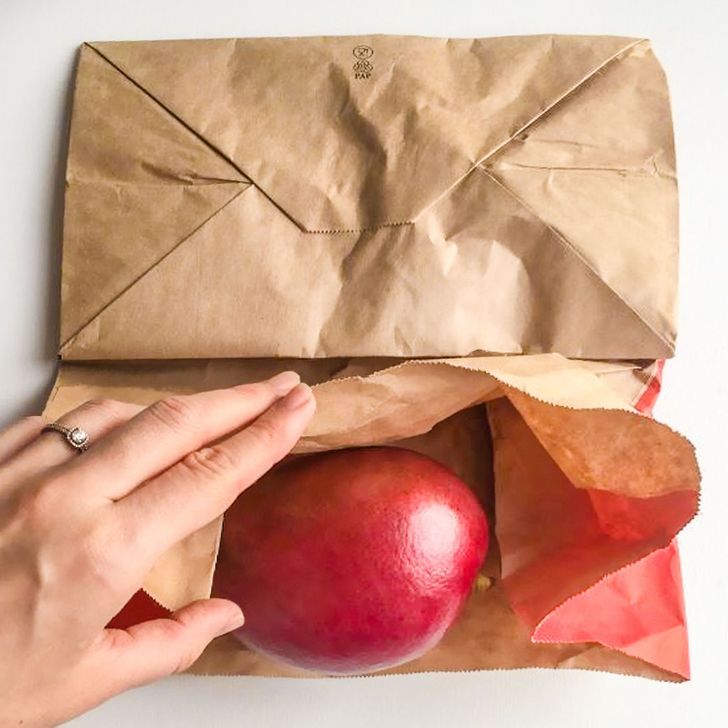
If you’ve accidentally bought an unripe mango, there are several ways to help it ripen, fast.
- In a dark place
Put your mango in a storage pantry or a kitchen cabinet for a couple of days to speed up ripening. Don’t put the fruit into the fridge — it can ripen only in a warm place. - In a paper bag
Leave the mango in a paper bag for several days. The fruit will intensively release ethylene in such conditions, helping itself to ripen. - In a bag with bananas
Place the mango in one bag with 2-3 yellow bananas and leave the fruit at room temperature for 2-4 days. The fruit will release ethylene that will help it to ripen. - In rice
Place the mango in fresh, dry rice, which will speed up the release of ethylene in the fruit. Therefore, the fruit will ripen faster.
An important note: Make sure to check the mango while it’s ripening. It can overripen quite fast and start to go bad.
Bonus: different types of mangoes from around the world
A popular tropical fruit, the mango, comes with a pit surrounded by sweet, creamy, fleshy outer parts. It’s rich in antioxidants, minerals, and vitamins. There are more than 1,000 types that come in different colors, shapes, flavors, and seed sizes, all unique in flavor. It’s worth knowing the most popular types from around the world.
- Honey (Ataulfo) mangoes are small and shaped like a bean with a flattened exterior and vibrant yellow flesh and tiny pits. They’re grown in Mexico, Peru, Ecuador, and Brazil.
- Francis mangoes are sweet and fruity with bright yellow and green overtones and soft, juicy flesh. They’re grown on small farms in Haiti.
- Haden mangoes are oval to round in shape and come in medium to large sizes with bright red, green, and yellow overtones. They have a sweet and sour flavor with a bitter aftertaste. They’re mainly grown in Mexico, Ecuador, Peru, and Florida in the US.
- Keitt mangoes are large and oval-shaped with thin seeds and medium green skin. They have juicy flesh with tangy and citrus flavors. They’re mainly grown in Mexico, Ecuador, Brazil, and the US.
- Kent mangoes are large and oval-shaped with dark green skin, a dark red blush, and seeds with a thick woody exterior. They have a sweet, peachy flavor with some sour notes. They originate from Florida.
- Tommy Atkins mangoes are known to be tart and boast a dark red color. They taste like tropical fruit and contain citrus notes. They’re primarily grown in Mexico, Brazil, Ecuador, and Guatemala.
